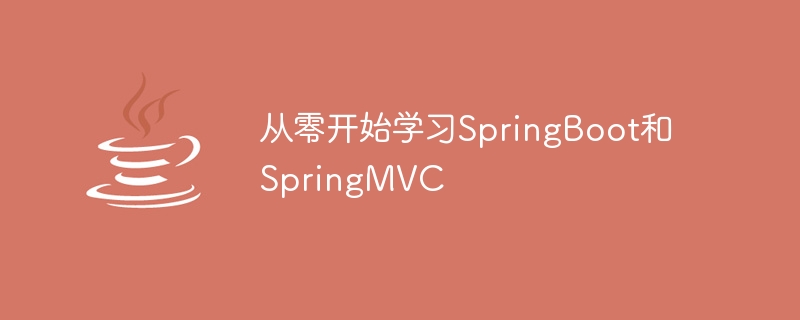

Learn SpringBoot and SpringMVC from scratch, you need specific code examples
SpringBoot and SpringMVC are both very popular development frameworks in the Java world. SpringBoot is a rapid development framework based on the Spring framework, which simplifies the configuration and deployment process of Spring applications; and SpringMVC is a module in the Spring framework for building Web applications. This article will introduce how to learn SpringBoot and SpringMVC from scratch and provide specific code examples.
Step One: Environment Setup
Before starting to learn, we first need to set up a development environment. You need to install the following software:
Step 2: Create a SpringBoot project
Next, we will create a simple project based on SpringBoot.
Once your project is created, you will see a project structure based on SpringBoot.
Step 3: Write SpringMVC Controller
Now, we will create a simple SpringMVC controller. Open the "src/main/java" directory and create a package named "com.example.demo.controller". Then under that package, create a Java class called "HelloController".
package com.example.demo.controller;
import org.springframework.web.bind.annotation.GetMapping;
import org.springframework.web.bind.annotation.RequestMapping;
import org.springframework.web.bind.annotation.RestController;
@RestController
@RequestMapping("/hello")
public class HelloController {
@GetMapping
public String sayHello() {
return "Hello, SpringMVC!";
}
}In the above code, we annotated this class with the @RestController annotation, which means that it is a RESTful-based controller. We also use the @RequestMapping annotation to specify the request path, here it is "/hello". Finally, we use the @GetMapping annotation to annotate the sayHello() method, which will be mapped to the GET request under the "/hello" path.
Step 4: Run the SpringBoot application
Next, we need to run the SpringBoot application to see if our controller is working properly.
congratulations! You have successfully created a simple web application using SpringBoot and SpringMVC. Now you can continue to extend your application and add more controllers and services.
Conclusion
In this article, we learned SpringBoot and SpringMVC from scratch and provided specific code examples. By following these simple steps, you can quickly create a web application based on SpringBoot and SpringMVC. I hope this article can be helpful to your study. I wish you happy learning and continuous progress!
The above is the detailed content of Learn SpringBoot and SpringMVC from scratch. For more information, please follow other related articles on the PHP Chinese website!




